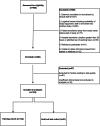Predicting deterioration in dengue using a low cost wearable for continuous clinical monitoring
- PMID: 39488652
- PMCID: PMC11531560
- DOI: 10.1038/s41746-024-01304-4
Predicting deterioration in dengue using a low cost wearable for continuous clinical monitoring
Abstract
Close vital signs monitoring is crucial for the clinical management of patients with dengue. We investigated performance of a non-invasive wearable utilising photoplethysmography (PPG), to provide real-time risk prediction in hospitalised individuals. We performed a prospective observational clinical study in Vietnam between January 2020 and October 2022: 153 patients were included in analyses, providing 1353 h of PPG data. Using a multi-modal transformer approach, 10-min PPG waveform segments and basic clinical data (age, sex, clinical features on admission) were used as features to continuously forecast clinical state 2 h ahead. Prediction of low-risk states (17,939/80,843; 22.1%), defined by NEWS2 and mSOFA < 6, was associated with an area under the precision-recall curve of 0.67 and an area under the receiver operator curve of 0.83. Implementation of such interventions could provide cost-effective triage and clinical care in dengue, offering opportunities for safe ambulatory patient management.
© 2024. The Author(s).
Conflict of interest statement
The authors declare no competing interests.
Figures


References
-
- Wilder-Smith, A., Ooi, E.-E., Horstick, O., & Wills, B. Dengue. Lancet393, 350–363 (2019). - PubMed
-
- World Health Organization. Dengue Guidelines for Diagnosis, Treatment, Prevention and Control: New Edition. (World Health Organization, 2009). - PubMed
-
- Baker, T. et al. Critical care of tropical disease in low income countries: report from the task Force on tropical diseases by the World Federation of societies of intensive and critical care medicine. J. Crit. Care42, 351–354 (2017). - PubMed
LinkOut - more resources
Full Text Sources

